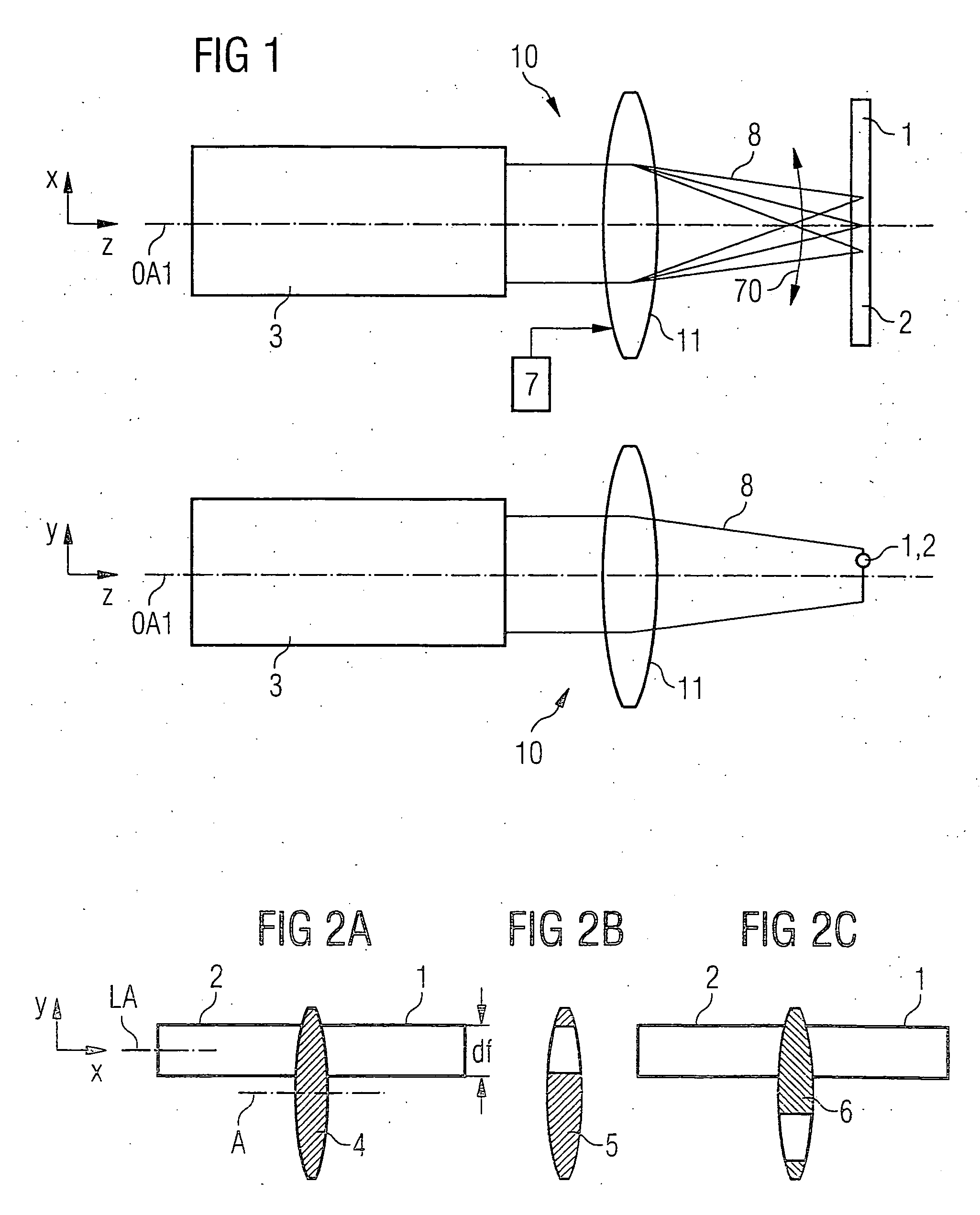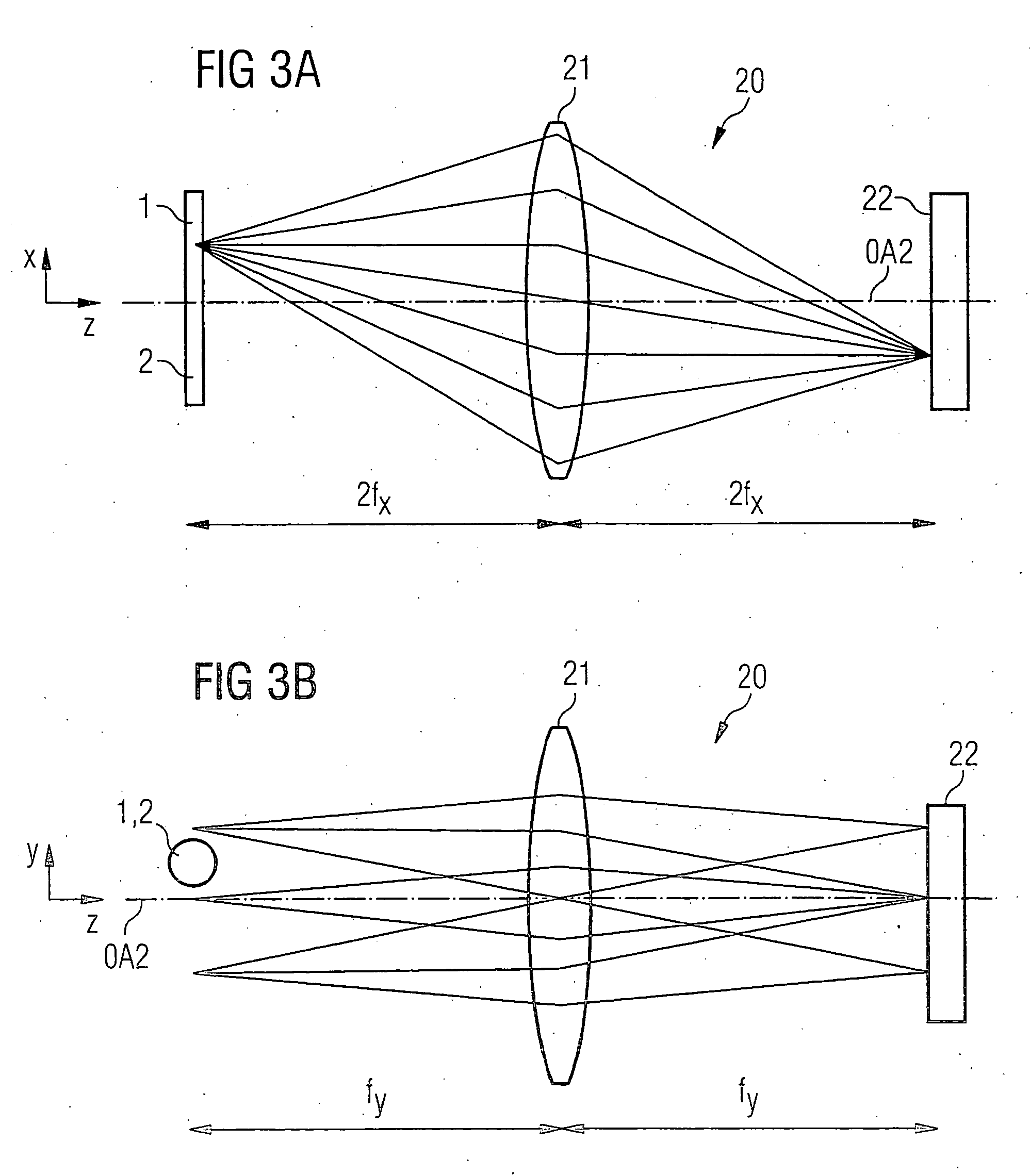Device for thermally treating at least one optical fibre
a technology of thermal treatment and optical waveguide, which is applied in the direction of optical elements, manufacturing tools, instruments, etc., can solve the problems of splice quality, temperature gradient between, and incomplete welding of the two ends of optical waveguides
- Summary
- Abstract
- Description
- Claims
- Application Information
AI Technical Summary
Benefits of technology
Problems solved by technology
Method used
Image
Examples
Embodiment Construction
[0026]FIG. 1 shows a schematic illustration of an embodiment of the device according to the invention. A laser beam source 3 and a first optical system 10 for directing and preferably focusing a laser beam 8 emitted by the laser beam source onto the optical waveguide fibers 1 and 2 are represented. The first optical system 10 also includes the radiation optics of the laser for directing the laser beam.
[0027]FIG. 1 shows by way of example the imaging of the laser beam 8 onto the fibers to be spliced from two orthogonal directions. In the direction along the longitudinal axes of the fibers 1, 2, the laser beam 8 can be shifted in the longitudinal direction thereof, in particular moved periodically (movement direction 70 of the laser radiation 8). This uses a schematically illustrated drive device 7, which moves an optical component in the form of a lens 11 in such a way that a position of a focusing area of the laser beam inside which the radiation strikes the optical waveguide fiber...
PUM
| Property | Measurement | Unit |
|---|---|---|
| diameter | aaaaa | aaaaa |
| focal lengths | aaaaa | aaaaa |
| focal length | aaaaa | aaaaa |
Abstract
Description
Claims
Application Information
 Login to View More
Login to View More - R&D
- Intellectual Property
- Life Sciences
- Materials
- Tech Scout
- Unparalleled Data Quality
- Higher Quality Content
- 60% Fewer Hallucinations
Browse by: Latest US Patents, China's latest patents, Technical Efficacy Thesaurus, Application Domain, Technology Topic, Popular Technical Reports.
© 2025 PatSnap. All rights reserved.Legal|Privacy policy|Modern Slavery Act Transparency Statement|Sitemap|About US| Contact US: help@patsnap.com



